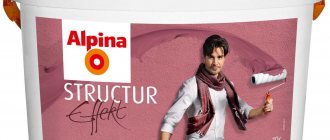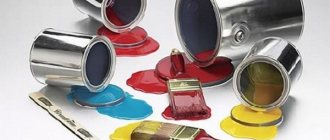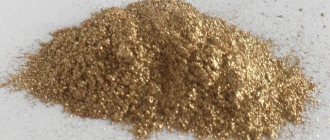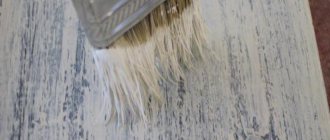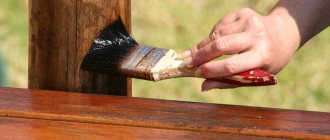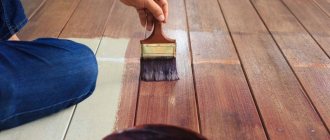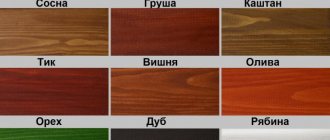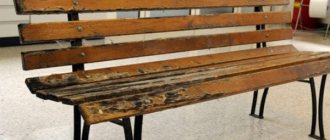Plaster paint for interior work is a very important component of the future interior. Not only the design, but also the quality of covering walls, ceilings or floors depends on its correct choice. Today there is a wide variety of compositions, but it is quite difficult to navigate them.
As a rule, interior paints are considered very durable due to the resin they contain. After drying, a film is formed that will protect the pigment. Let's consider the highest quality and suitable types of materials for this purpose.
Polyurethane and epoxy paints
This is an excellent option for working on plastered surfaces. These types of paints do not require preliminary preparation of the walls. The composition is usually produced in double packaging. To achieve the best result, you need to mix them. The proportions are always indicated on the packaging.
What do reviews say about Tikkurila paint for interior plastering work? It's pretty high quality. The product reliably protects the surface from future damage.
Tikkurila paint can be used in public and residential buildings. It is applied to cement, concrete, plastered, brick surfaces or cement-lime plaster. Also suitable for plasterboard sheets and particle boards.
Another feature of epoxy and polyurethane paints is their fast drying time. As reviews note, this composition dries within three hours after application. But the final “setting” occurs only after a week. Only after this can you decorate the surface with a pattern. This is not necessary, but many people decorate a room this way. As a result, the design is bright and original.
If we talk about the disadvantages of such plaster paints for interior work, reviews note the high cost. And the more unique the texture and shade, the more expensive the material. But you need to take into account that by purchasing such paint, you can get good surface protection. After all, the composition is not afraid of aggressive chemical influences.
Benefits of use
Facade paints applied over plaster for exterior work improve the external characteristics of the building and create a protective layer from the effects of climatic conditions.
High-quality compositions have numerous advantages:
- resistance to damp environments. The paint does not allow water to penetrate into the wall material, protects the surface from dampness, prolonging its service life;
- good vapor permeability. The finishing layer allows air to pass through, helping moisture trapped in the walls to evaporate, oxygen penetrates into the room, refreshing the air inside;
- the paint does not deteriorate under the influence of precipitation and temperature changes, and retains the attractive appearance of the walls;
- the material for the facade of the house prevents the formation of a favorable environment for the emergence and development of microorganisms, mold and mildew.
Emulsion
Wall plaster can work well with emulsion paint. It is considered one of the best plaster paints for interior work. Moisture-resistant enamel combines polyphenols and acrylics. Thus, the product perfectly penetrates the pores of the plaster and forms reliable protection. The paint also dries quickly. Reviews say it will take about four hours. In addition, the composition does not harm the body. It is easy to wash off the paint from the skin using warm water and soap.
But before using emulsion paint for interior work, experts recommend treating the plastered surface with a detergent. Thanks to this, we neutralize the alkali. The paint will adhere reliably and firmly.
There are several types of these compositions:
- Matte.
- Glossy.
Which is better to choose? Experts say that it is better to give preference to matte enamels. They are more resistant to abrasion. In addition, the glossy composition does not have the same durability as matte. Washable paint on plaster is mainly used for interior work. Additionally, surface decoration is possible. For example, painting on wet plaster looks original.
The texture of emulsion paint can be different:
- Small.
- Rude.
The first type looks attractive on the wall, but may crumble over time. Therefore, this composition is not recommended for use in places where there will be frequent contact with anything. Acrylic paints for interior work on rough-textured plaster are very durable. They do not crumble like their counterparts. However, there is a big disadvantage. Due to its rough texture, this paint constantly attracts dust. To make the wall less contaminated in the future, the surface is additionally treated with a regular water-based emulsion.
Please note that the consumption of textured emulsion paint is quite high. If you plan to decorate relief walls, you need to buy material with a reserve.
Photo
To conclude our review, here are a few photos of decorative plaster after painting.
We hope you found the article interesting. Leave your feedback and questions in the comments below.
Previous
PaintingPainting plastered walls: what to choose and how to apply
Next
Painting: Painting a plastered facade: choosing paint and tips for working
Non-drip ceiling paint
If you plan to finish the ceiling after plastering, you can consider purchasing special paint. Its composition is similar to emulsion and alkyd analogues. However, jelly is additionally added here, which makes the solution thicker. This makes painting the ceiling much easier. The paint will not drip down, but will be evenly distributed over the entire surface. But you should always pay attention to the instructions. Interior plaster paint should not be shaken or stirred before use. Otherwise, its structure may deteriorate.
Before painting, all nearby surfaces should be protected. If paint accidentally gets onto an unwanted area, it will be very difficult to remove it later.
Painting the walls
Now let's look at how to paint walls or ceilings. Whatever type of paint is chosen, it can be applied correctly by following the diagram below:
- You can start painting only after the base has completely dried - plaster on the walls and putty, if used. For cement and gypsum mixtures, this time will be different. Quite often, facade surfaces are painted without plaster, for example, the walls inside a loggia or the brickwork of a garage. Inside the house, painting unplastered surfaces can sometimes be a good design move.
- To determine the amount of dye, it is necessary to know not only the total surface area, but also its consumption per square meter. m, and it may vary for different compositions. Naturally, the number of layers applied is also taken into account.
- All work must be carried out at a temperature not lower than +5°C; before complete drying, it is undesirable for the wall to be exposed to moisture or direct rays of the sun - if it dries unevenly, spots will appear on it.
- The surface is first thoroughly cleaned of dust and debris.
- In order for the coating to look perfect, the wall must first be leveled. If there are cracks, they are widened and sealed with a cement-sand composition. Small chips can be repaired with putty.
- To increase adhesion to the surface (adhesion) and reduce paint consumption, walls after plastering are coated with deep-penetrating acrylic primers. This type of primer is suitable not only for acrylic paints and varnishes, but also for other types, i.e. is universal.
- Water-emulsion and acrylic paint that have thickened during storage, if necessary, are diluted with plain water or a special solvent. Alkyd paints use white alcohol, and oil paints use drying oil. Any solvent is introduced in small portions so as not to destroy the bond between the diluent and the coloring pigment.
- To give the composition a certain shade, colored pigments are introduced into it. Since the paint becomes lighter when it dries, it is difficult to immediately achieve the desired shade and determine what color you will get in the end; you need to test it on a small area of the wall.
Advice! White paint must be diluted with colored pigments immediately in a large container. After all, if there is not enough of it for the entire surface, it is unlikely that it will be possible to repeat the shade and re-mix the pigments in the required proportion.
- To prevent the paint from having to be washed off, masking paper tape is applied to unpainted surfaces. Heavy furniture that is difficult to remove from the room is covered with film. She better also close the windows and doors.
- Work begins in corners and hard-to-reach places.
- Coating with a brush or roller is done from top to bottom. Water-based or acrylic paint can be applied mechanically using a compressor and a spray gun. The roller is used with a fur coat made of synthetic plush or polyacrylic; the length of the pile can be different. For application on top of plaster, a pile of 9-11 mm is suitable.
- When working indoors, painting begins with the ceiling, then moves on to the cornices, moldings, and the walls are painted last.
- If you plan to paint only part of the wall a certain color, separate the border with masking tape. Its location is preliminarily verified by the building level.
- To prevent the joints from being noticeable, they are carefully shaded before the paint dries.
- To obtain a uniform coating, it is better to paint the wall 2 times. In order for the paint to be distributed evenly, the first layer is applied with horizontal strokes using a long-pile roller, and the second - with vertical strokes; in this case, the roller is chosen with a medium-length pile. It is necessary to start re-painting only after the first layer has completely dried.
Advice! Please note that if the wall has been plastered for a long time, the difference between the old and new plaster will immediately be evident - due to the difference in the absorption of the composition, the surface after painting will look heterogeneous. This deficiency can be smoothed out with careful priming.
You can see how walls are painted mechanically in the video:
The advantages of this method over manual painting are the speed of paint application and its more even distribution on the wall.
Read more about painting decorative plaster in our article.
We hope this article was useful to you. Leave your feedback and questions in the comments below.
Technical characteristics of latex paints
Let's look at the technical characteristics of paints for interior work using Dufa Mattlatex as an example. This is a matte latex paint that is used to create wear-resistant coatings. Can be used on:
- Plaster.
- Putty.
- Drywall.
- Structural wallpaper for painting.
Produced in buckets with a capacity of 1, 5 and 10 liters, color – white, diluent – water. It should not contain more than 10%. This paint is stored and applied at temperatures not lower than +5 degrees Celsius. Withstands up to 5 thousand abrasion cycles. The layer dries in 4 hours. One liter of paint is enough to cover 6.5 square meters of wall. Density – 1700 grams per liter.
By the way, there is another paint from this manufacturer. This is Dufa Wandfarbe. According to its properties, it is a water-dispersed paint. Used on surfaces with low operational load. Washing and repair repainting is allowed. Used on both walls and ceilings.
Density – 1500 grams per liter. Thinner – water. Material consumption is one liter per five square meters. Produced in containers of 2.5, 5 and 10 liters. Gloss level – deeply matte.
Choosing paint for plaster
To paint interior walls and decorate facades, paints of different compositions are used. After all, the requirements for them differ significantly.
For interior work
The following types of paints are most often used for painting plaster indoors:
Water-based: form a matte surface, easy to apply, economical, do not contain toxic substances, but are able to absorb moisture and quickly wash off upon contact with water, therefore they are not recommended for wet rooms. Water-based paint can be applied to various types of surfaces: plaster, concrete, wood, brick, wallpaper, plastic elements. Available in a variety of colors and white for mixing with water-based coloring pigments. You can dilute with regular clean water. Material consumption per 1 m2 is 0.1 - 0.15 liters. That is, one 10 liter can of paint is enough to paint approximately 80 m2 of surface in one layer. Drying time no more than 1 hour.
Tikkurila Harmony deep matte paint for walls and ceilings
Acrylic dyes are the same aqueous dispersions, but due to the higher acrylic content they provide a more durable and durable coating, which can be easily wiped with a slightly damp cloth, but excess water ingress is also unacceptable. Fits well on all types of surfaces. Consumption is slightly higher than that of water-based emulsion.
The coating can be either matte or glossy. For example, Tikkurila acrylic paint is suitable for interior work in dry rooms and with high humidity, for example, in the kitchen or bathroom, preventing wet walls from damaging the plaster. Also suitable for painting ceilings.
Latex: more expensive, environmentally friendly, form a glossy or matte waterproof film on the surface, can be used in bathrooms and other rooms with high humidity levels. Suitable for painting walls and ceilings made of all types of materials, including those plastered with gypsum, cement or lime mixtures.
Latex paints are thicker than water-based paints, so sometimes their consumption when painting (hiding power) is indicated in g/m2. Different manufacturers' products often differ in consistency, and dye consumption varies widely from 90 to 200 g/m2. They can be diluted with water up to 5% of the initial volume. Drying time 1 - 5 hours.
These paints are often used as a finishing coat for decorative plaster. After painting, they highlight the volume and texture of the surface well.
Alkyd (enamels) and oil : provide a very durable wear-resistant coating that is resistant to mechanical damage. Walls coated with this composition do not require special care and can be easily washed with any soap solution. The disadvantages include a small selection of colors, increased consumption, increased fire hazard (they easily ignite). Alkyds can release toxic substances when applied. In general, these materials are suitable for interior decoration of both wet and dry rooms. After drying, they create a durable glossy finish.
You should not immediately paint walls plastered with cement-sand mortar - the paint will lie unevenly. First, it is better to cover them with a thin layer of finishing putty. If this is still necessary, it is better to whiten them with ordinary lime or cover them several times with acrylic paint.
In general, there is a rule - painting is done with a composition similar to plaster. That is, acrylic plaster is coated with acrylic paint, lime-cement plaster with lime, silicate plaster with silicate paint, etc. If it is not possible to determine the composition of the old plaster, do a test paint job and compare which dye applies best.
For exterior decoration
Not every paint is suitable for exterior use. She must be:
- high strength and wear resistant;
- resistant to ultraviolet radiation and does not fade when exposed to sunlight;
- water-permeable and not afraid of moisture;
- quite economical and have a consumption level of no more than 200-300 g per square meter. m.
Advice! Exterior paints should not be used for interior painting. They are developed specifically for use in difficult conditions and are not always environmentally friendly.
The following compositions are used for finishing plastered facades:
Latex (acrylic): have bright, saturated colors, are resistant to chemical compounds, do not fade, are not afraid of temperature changes, and have fairly low water permeability. The surface remains uncontaminated for a long time. This type of coating is universal in use, suitable for painting wood, concrete, plastered aerated concrete and without plaster, brick and other surfaces. Application method: brush, roller or spray gun.
Acrylate-silicate compositions. They are used for painting mineral substrates - concrete, cement and lime plasters, bricks, etc. Also suitable for interior work in wet rooms: bathrooms, kitchens, corridors. They have good vapor permeability and resistance to precipitation. Consumption rate per layer is 0.17 - 0.2 kg/m2. If necessary, diluted with water and tinted with water pigments.
Silicate. They contain liquid potassium glass, mineral fillers and coloring pigments. The paints are highly water-resistant, are not afraid of mold and mildew, are resistant to dirt and UV rays, and have good adhesion, but their color palette is not rich. Consumption is 0.15-0.3 l/m2. The features of silicate dyes also include high vapor permeability, so they are suitable for application directly to foam blocks, gas blocks or on top of vapor-permeable plasters.
Silicone paints : contain acrylic and silicate, form a waterproof surface, protecting the plaster on the facade from moisture, resistant to mechanical damage, a large selection of colors and shades.
Oil and alkyd : in recent years they have been losing popularity: the plastered surface covered with them cracks in the sun. These coatings are most often used for wood - wall cladding, window frames, fences, railings, etc. Oil paints are also suitable for metal, but in this case, preliminary application of a primer is required. On top of concrete and plaster they are used less often, because... it is expensive to cover large areas of walls. Oil paint is made from drying oil from natural oil, which affects the price. Material consumption depends on the surface to be painted - 1 liter per 6-10 m2.
Advice! Please note that painting porous surfaces will require more paint. Manufacturers indicate only the minimum consumption, provided that the composition is applied to a perfectly smooth and even base.
What else should you pay attention to?
Special attention should be paid to those paints that cannot be used for decoration inside the house. This applies to alkyd and oil-type compositions. In addition, hairiness and cracks appear in many areas. It is also not recommended to use:
- Metal.
- Fireproof.
- Paints for wood.
The latter can only be used for taps and pipes. After dyeing they will become shiny. Fire-resistant facade paint is also not suitable for interior plastering work. It can only be used to paint a brick wall.
Preparatory work
Before you start painting, the walls need to be prepared.
To do this, perform the following steps:
- The surface of the walls must be cleaned of dirt and dust. If there is an old coating, then it must be removed so that the new dye lays evenly and no layer of old paint appears under it.
- All existing cracks and chips must be repaired with cement mortar. Potholes and depressions are covered with putty. The treated surface must be covered with plaster 2 times.
- After applying the plaster mixture, it is advisable to sand the area to be treated until completely smooth - on a flat surface the paint will lie easier and easier, set better and dry faster.
- To increase adhesive properties, plastered walls are additionally coated with soil mortars. It is recommended to use acrylic compounds with deep penetrating properties as primer.
Pay attention to: What is frost-resistant facade paint
It is advisable to prime the walls twice, allowing each layer to dry thoroughly. Acrylic primers are used not only to treat the base surface for painting with acrylic dyes, but also for other types of paints.
Master class on painting walls and ceilings using plaster.
What to choose?
Experts advise using the following types:
- Polyurethane.
- Epoxy.
Their advantage is that the wall does not need to be additionally prepared, unlike similar plaster paints for interior work. The composition secures the plaster layer well, but you need to work with it carefully. Unlike water-based paint, such paint can be harmful to the body. Therefore, it is impossible to do without personal protective equipment.
Painting nuances
You should know a few nuances:
- You need to start applying paint on plaster for interior work after the plaster layer has completely dried. This will take at least two days.
- Although the material does not require preliminary surface preparation, it is recommended to treat the wall with primer. This will make the surface easier to accept paint.
- You can use a brush to apply the composition, but it is more convenient to use a roller.
- Rubbing the plaster with a sponge is allowed. This allows you to create a play of colors or create a unique pattern.
How to decorate such a surface? First, the wall is painted in a base shade (light) with a long-haired roller. Next, wait a few hours for the base coat of paint to dry. A small amount of darker enamel is applied over it. By following these rules for applying paint for interior plastering work, you can obtain a visually more voluminous surface. If there is no need to apply dark paint, you can use metallic. This is an imitation of gold, bronze and silver. It is applied using a dry brush method or using a special mitten.
Tools for work
The following tools are used for painting plaster surfaces:
- wide and narrow brushes for applying the substance;
- if the area is too large, then the use of rollers based on foam rubber or material with pile is recommended;
- grater;
- fine-grain sandpaper, with which the surface of the base is leveled and sanded;
- paint tray;
- ladder.
For work you will need protective clothing, as well as goggles and a respirator. If you have to work a lot, and the work area is large, then you can paint the plaster using a spray gun. To create a textured layer, use a roller with special attachments.
Application rules
It is worth knowing how to properly use paint for interior plastering work. The final result will depend on this. The work is carried out in several stages:
- After applying a layer of plaster and drying it, the wall is primed in two or three layers.
- Wait until the primer dries. This will take another two days. At this time, you can start buying paint.
- Select the application method - brush or roller. Some people use a spray gun to apply. It's fast and convenient, but you need a specialized tool.
- The paint is applied in two layers. First, a light layer is made - the base. If it is a spray gun, you should not stay in one area for a long time to avoid drips. Next, a thicker, main layer is applied. But here it is also important not to overdo it. Stains significantly spoil the appearance of the wall.
- A small amount of metallic is applied to the protruding areas.
- Wait until the paint dries. Depending on the type, this will take about three to five hours.
- Protective varnish is applied using a spray gun.
How to apply it correctly?
If the base after applying the plaster turns out to be fragile, then it is important to strengthen it with a colorless primer. After this, the process of painting the walls begins.
Stir the paint cans well, adding color if necessary. A test stain is carried out on an inconspicuous area to determine whether the resulting color is satisfactory.
Then, using a roller or paint brush, the plastered walls are covered in two layers so that all depressions and irregularities are saturated with the composition.
If the solution is applied with a roller, then painting is done from bottom to top. If with a brush, then in a vertical or horizontal direction. After finishing the painting work, the wall is left to dry.
Is it possible to use façade paint for interior work?
Experts give a positive answer. Decorative plaster is painted:
- Silicone.
- Acrylics.
- Silicate.
- Other water-based paints.
But first you must clean the surface. Oil stains and dirt must be excluded.
Types and differences of decorative plasters
Before looking into the composition of plaster, you should divide it into types, since this affects the list of components that form its structure. So, the entire range of this finishing material can be classified according to its properties: • Textured (creates an imitation of the surfaces of natural materials, usually natural stone; especially attractive for interior decoration of apartments); • Structural (consists of a base and filler in the form of stone chips of various fractions); • Venetian (has special artistic properties; application involves the use of techniques that affect the final result).
We should not forget about the wide price range of wall coverings - from “budget” to “business class”. The answer to the question: “how much does decorative plaster cost per square meter?” - does not yet give a complete idea of the upcoming costs... The full costs will also include the cost of finishing the walls and preparing the foundation (of course, if this is required). Prices for decorative plaster walls depend on the complexity of applying the desired effect and range from 300 to 1,200 rubles per sq. m. meter.
Its types are also distinguished based on their composition: • Silicate; • Silicone; • Acrylic; • Mineral. In order not to unduly complicate the classification, we note a list of materials that may be included in the composition and how they affect it. Most products are based on viscous water-soluble liquids, such as: • Acrylic, silicone, latex – vapor-permeable components that allow the walls to “breathe”, are wear-resistant and washable; • Silicate liquid glass, capable of repelling moisture and dirt, therefore practically does not swell and does not get dirty; • Mineral fillers (marble, quartz flour) – give the surface a pearlescent sheen, radiance, and signs of stone; • Gypsum, lime – are responsible for the strength and hardness of the coating. Other components such as natural pigments, thickeners, cellulose fibers, stone chips, silver and gold threads provide color, consistency, structure and special properties.
As a rule, a finished product is sold, i.e. decorative plaster in buckets, which just needs to be painted.
Recommendations
Experts give some useful tips:
- For exterior plastering work, weather-resistant paint is more suitable.
- If there is no specialized primer for surfaces with cracks, you can use polyvinyl acetate paints.
- Since structural plaster has granule-like additives, color can be added to the mixture immediately.
Painting walls over plaster inside the house - what are the features
Painting walls in an apartment with plaster has its own characteristics:
- work is carried out at temperatures above +5 degrees;
- Before purchasing the material, measure the area of the walls to be painted - on the packaging the manufacturer indicates the consumption per 1 square meter. m.;
- to get the desired color, color is added to the paint;
- if you plan to paint the walls over plaster in zones of different shades, then use masking tape to obtain smooth joints;
- before painting the plaster, cover all other surfaces, furniture and lighting with the same masking tape or film;
- Do not allow moisture to enter the painted areas - after drying, light spots will remain on the paint.
